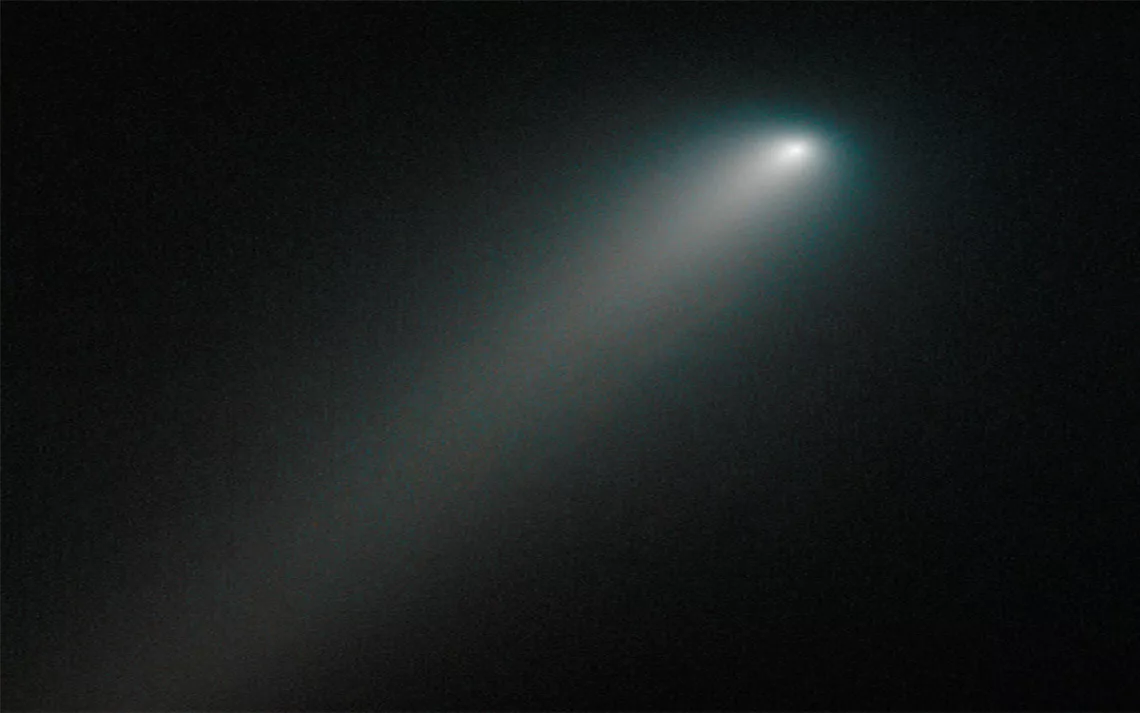December Astronomical Highlights: Comets, Meteors, and Planets Galore
This month, skyward wonders come in pairs

Photo courtsey of NASA, ESA, and the Hubble Heritage Team (STScI/AURA)
A Comet Duo
In late November, the newly discovered Comet Machholz-Fujikawa-Iwamoto, or C/2018 V1, appeared in the night sky and will remain there through early December. It will stay close to the western horizon and set soon after the sun, making it hard to spot except for the brief window when the sky is fully dark. C/2018 V1 will slide from the constellation Serpens Caput into Ophiuchus and then Serpens Cauda, or from lower right angling upper left across the western horizon. If you are familiar with the Summer Triangle, look below that to find the right region of sky. If you own a Go-To telescope, program it to find M10 on December 1, when the comet is near this star cluster. The comet’s closest approach to the sun is December 3/4.
An even better chance to spot a comet arrives in mid-December. Comet Wirtanen will pass 30 lunar distances from Earth, which is considered a close brush in the overwhelming distances of space. In the evening, start looking for Wirtanen in the eastern sky with a small telescope or binoculars. The peak of brightness should occur around December 16, when the comet is predicted to reach naked-eye visibility, although because of its diffuse nature and a brightening gibbous moon nearby, it won’t be an easy catch without optical aid. On that date, the comet will be in the constellation Taurus in the east, not far from the Pleiades star cluster. Throughout the course of December, Comet Wirtanen will move along the eastern horizon from right to left, from Cetus into Taurus and then Auriga. Just before Christmas, you can find it next to the bright, sparkling star Capella.
A Pair of Meteor Showers
Along with its dueling comets, December also hosts two meteor showers. The Geminid meteor shower is historically one of the better annual meteor showers, with up to 100 meteors an hour at peak, which falls on December 13/14.
The Ursid meteor shower occurs between December 17 and 23, with the peak of activity around 21/22. The Ursids make for a much quieter show, with a ZHR, or zenithal hourly rate, of 10, compared to the Geminids’ 100. The full moon on December 22 will also make for a more-washed-out night sky, impacting your ability to see the Ursids.
Neptune Nears Mars
Neptune is dim enough, at magnitude 7.9, that it requires binoculars or a telescope to spot. To anyone trying to track down the elusive planet, it can be indistinguishable from background stars. That is, unless you have a bright signpost pointing the way. Reddish Mars will be just such a guide on December 6 and 7 when the Red Planet is less than a degree from Neptune. Find reddish Mars in the southwest after the sky has grown completely dark. Focus binoculars on it and then look for a point of light nearby that may even look slightly bluish. This object is Neptune.
On December 6, Neptune will be to the upper left of Mars, and on the next night, December 7, Neptune will appear on the lower right—it’s Mars that has made the jump, which you may be able to discern by the difference in the background stars. A 6.2-magnitude star (81 Aquarii) stands above Neptune on December 6, but by the 7th , Mars will have wedged itself in between this star and Neptune. Mars will continue to rise ever higher in Aquarius and will be joined by the moon on December 14. Before the end of December, Mars will cross into Pisces, making a beeline toward Uranus. These two planets will be just under a degree apart in February. It's not as close as the Mars/Neptune pairing, but still a good guidepost to look forward to for the chance to find another elusive gas giant.
There’s more notable planetary activity this month. After sunset on December 8 and 9, a very slender crescent moon nears Saturn by the southwestern horizon. Early risers can also spot Venus, Jupiter, and Mercury in the east before sunrise this month. Note especially December 21 and 22, when Jupiter and Mercury come within approximately a degree of each other. Last but not least, the solstice arrives on December 21 around sunset, signaling the start of winter.
 The Magazine of The Sierra Club
The Magazine of The Sierra Club







